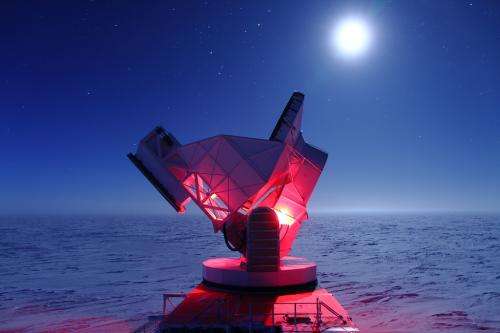Seeing back in time with superconductors

For Argonne physicist Clarence Chang, looking backward in time to the earliest ages of the universe is all in a day's work.
Chang helped design and operate part of the South Pole Telescope, a project that aims a giant telescope at the night sky to track tiny bits of radiation that are still traveling across the universe from the period just after it was born.
"Basically, what we're looking at is the afterglow light of the Big Bang," Chang said.
In the wake of the Big Bang, all the matter in the universe was just hot, dense particles and light. As the universe got older, it began to spread out and cool down over time, and the intense light from that period traveled across space. It's still traveling, hitting us all the time, and it has a very distinct radiation signature. "We call this the Cosmic Microwave Background, and it is essentially a snapshot of the universe as it looked about 400,000 years after the Big Bang," Chang said.
There's still a lot we don't know about the makeup of the early universe. Particularly mysterious are the dark matter and dark energy that appear to make up 95% of the universe, but about which we know very little. Mapping the Cosmic Microwave Background can shed some light on these dark forms.
The Cosmic Microwave Background photons are absorbed by water, so in order to catch them, you need a very dry, flat and preferably cold space, which narrows it down to just two locations on Earth. One is the Chilean mountains, where we have a different sky mapping project underway, and the other is the South Pole.
The South Pole telescope is more than 30 feet across; Chang and colleagues at Argonne helped build its camera. At the core of the detector technology is an extremely thin superconducting film. Although superconductors can carry an electrical charge perfectly, they are extremely sensitive to changes in temperature. When thermal radiation from the Cosmic Microwave Background hits the camera, it heats the material up slightly, which changes the conductivity of the film. This lets physicists record the energy coming from that particular part of the sky.
"So far we've mapped about 2,500 square degrees of the sky," he said, "so there's just 37,500 to go."
Provided by Argonne National Laboratory


















